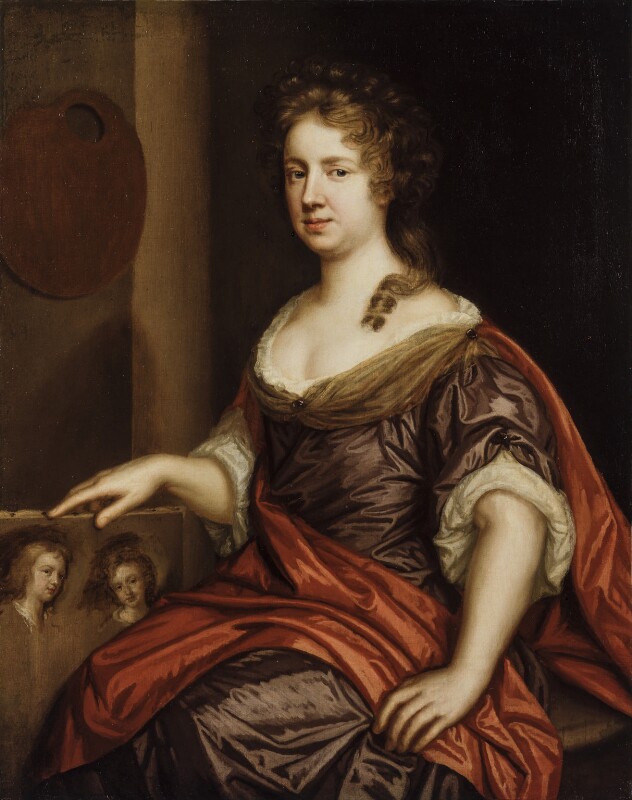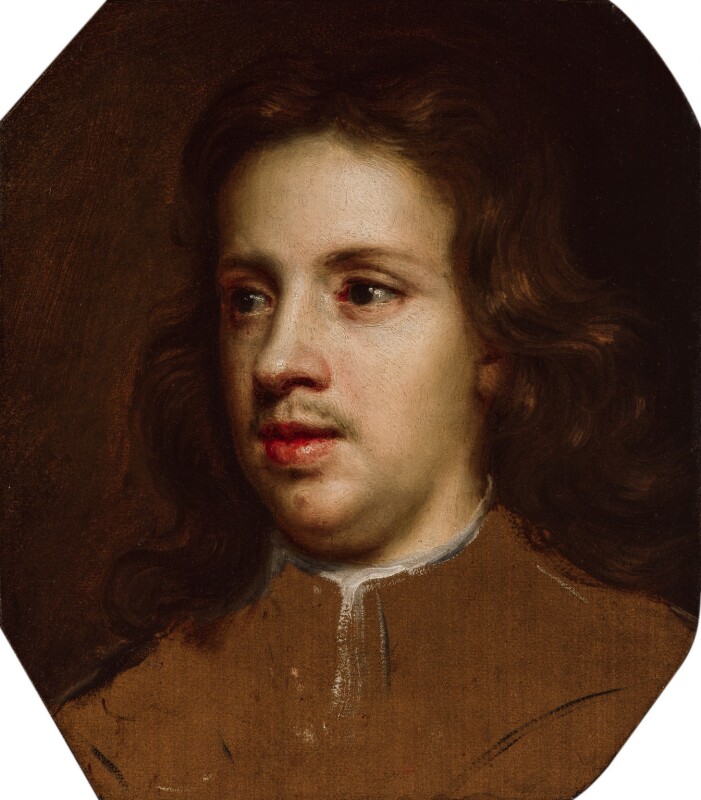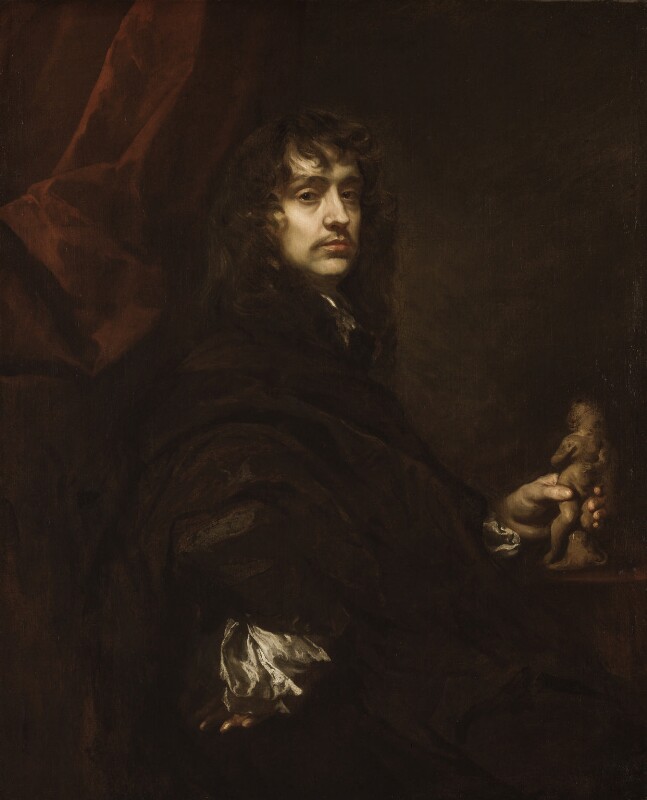There has often been a lack of recognition of professional female artists in the past, possibly because when compared to their male counterparts, they were a rarity. It was common for women to paint as a hobby, but not necessarily for business. In seventeenth century Britain, there are in fact only three named female artists, Joan Carlile, a portrait artist and Susannah Penelope Rosse, a miniaturist and Mary Beale, who this post is about. Compared with the other two women, Beale has a large body of work that survives, albeit that the majority are held in private collections and museum storage.[1] Still, she holds two titles, she is the only female artist of her era to have a self-portrait in a national institution in Britain, the National Portrait Gallery, and one of her adult homes survives, making it the oldest known artist’s residence to still survive.[2] Despite this, how did she become one of the first professional female artists in Britain?

Mary was born as Mary Cradock in Barrow, Suffolk, four miles from Bury St Edmunds, in 1633. Her father, John, was the minister at the village church, and her mother, Dorothie, died when Mary was ten. Her father allowed her a humanist education and was an amateur artist himself, so he is most likely to be the one who taught his daughter to paint.[3]
Marrying Charles Beale, a government worker, in 1652, Mary moved to London. During her marriage, Mary was able to continue painting as a hobby. She mostly painted portraits of family and friends, possibly as gifts.[4] Mary is mentioned as a painter in Sir William Sanderson’s Graphice… or The Excellent Art of Painting, so we know that she was definitely painting in the 1650s on a wider scale, but not yet in a professional capacity. Still, this shows that her reputation as an accomplished artist was already known before her decision to turn professional.[5]

In 1670, Charles lost his well paid job as Deputy Clerk in the Patents Office, meaning Mary had to become a professional painter in order to look after her family.[6] This was an unusual position to be in for the family. It is not often that women were the sole breadwinner for a family, but Mary was actively encouraged by Charles, who was her studio assistant, who also purchased supplies and handled the accounts.[7] It is thanks to his meticulous notebooks that we know of Mary’s work. He recorded information on her commissions, payment details and working practices, amongst other things.[8]
Mary’s London studio was based in Pall Mall, close to St James’ Palace, quite convenient for her client base of aristocracy, middle-class landowners and clerics.[9] Mary’s popularity only grew thanks to her friendship with Peter Lely, who was court painter to Charles II. It’s uncertain as to how they became acquainted, but she was allowed to observe him in his studio and he lent her many of his painting for her to copy in order to replicate his style.[10] This must have paid off as her fees were £5 (just under £570 in today’s money) for a head and shoulder portrait, and £10 (around £1,100 today for a three-quarter length portrait, similar fees to lesser male artists at the time.[11] At the peak of her popularity, Mary was able to earn £439 (just under £50,250 today) from 83 commissions in 1677.[12]

Sadly, Mary’s popularity as an artist had become integral to Peter Lely, meaning that when he died in 1680, her reputation dwindled and she took less commissions between then and her own death in 1699. Whilst she enjoyed some admiration from art critics after her death, she has largely been derided for her dependence on Lely as it has been viewed that this stifled her own creativity and artistic development.[13] This, alongside most of her work not being on display, is probably why her works have largely gone unrecognised by the wider public.
Thankfully though, that reputation has started to be altered as it has been acknowledged that Mary was able to be successful in a man’s world. This is probably because her husband, and later two sons, were her assistants, meaning that she was able to cross the public and private spheres in a way that merged the both together.[14] Bury St Edmunds, close to where she lived as a child, has also begun to recognise her talents. The Manor House Museum there is the largest collection of her work on public display, which I hope will continue for many years to come.[15]
[1] Helen Draper, ‘Mary Beale and Art’s Lost Laborers: Women Painter Stainers’, Early Modern Women 10.1 (2015), p. 141
[2] Ibid
[3] Ibid, p. 143
[4] Rosemary O’Day, ‘Family Galleries: Women and Art in the Seventeenth and Eighteenth Centuries’, Huntington Library Quarterly, Vol. 71, No. 2 (2008), p. 337
[5] Helen Draper, ‘Mary Beale and Art’s Lost Laborers’, pp. 143-144
[6] Christopher Reeve, ‘Mary Beale’, in Delia Gaze (ed), Concise Dictionary of Women Artists (London and New York: Routledge, 2011), p. 172; Rosemary O’Day, ‘Family Galleries’, p. 324
[7] National Museum of Women in the Arts, ‘Mary Beale’, https://nmwa.org/art/artists/mary-beale/
[8] Christopher Reeve, ‘Mary Beale’, p. 172
[9] Rosemary O’Day, ‘Family Galleries’, p. 324; Helen Draper, ‘Mary Beale and Art’s Lost Laborers’, p. 145
[10] National Museum of Women in the Arts, ‘Mary Beale’
[11] Christopher Reeve, ‘Mary Beale’, p. 172
[12] Ibid
[13] Ibid, p. 173
[14] Helen Draper, ‘Mary Beale and Art’s Lost Laborers’, p. 144
[15] Christopher Reeve, ‘Mary Beale’, p. 173
Sadly I believe the Manor House Museum has closed – I used to be a volunteer there but that was a long time ago! I do remember the Mary Beale paintings though…
LikeLike
That is a shame to hear really. Places like that should be able to stay open, but with the climate how it is. Funding is so essential.
LikeLike